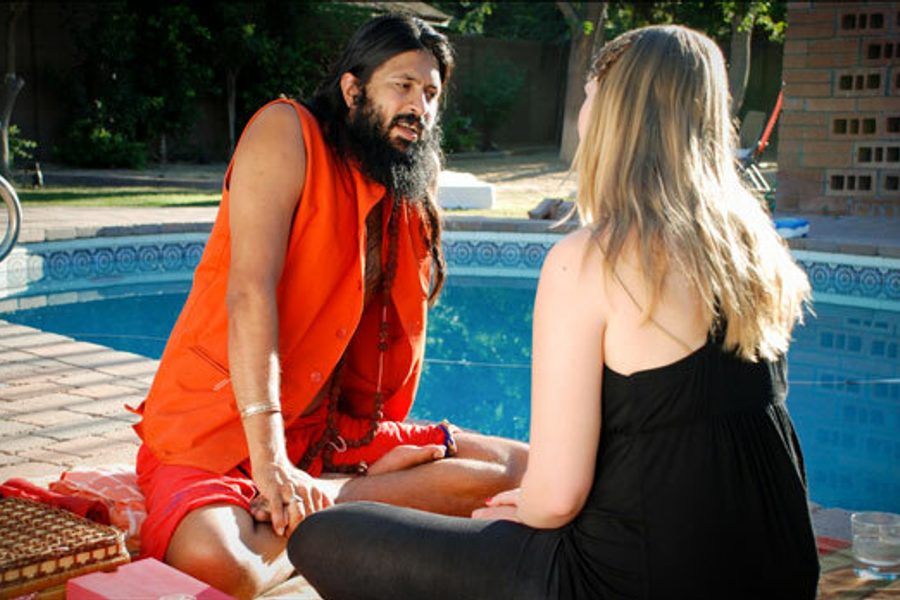Once Upon a Time in Mississippi
The Help proves, yet again, that Hollywood can’t resist placing white people at the center of racial struggles.
Michael Atkinson

The hullabaloo over The Help this summer was impossible to miss, and just as absurd. The bestselling novel was itself a chick-lit sop endeavoring to explore race relations in early-’60s Mississippi, but it has nothing on the film, which ramps up every cute, convenient and absurdly feel-good reflex into a Ron Howard-esque froth. No one has been surprised by the film’s slack middle-class sentimentality, but some observers were apparently taken aback – enough so to fill Sunday newspaper think-piece columns, in any case – by the focus on a white heroine (played by cartoon-eyed, alabaster-cheeked Emma Stone) in a film taking on Southern bigotry in the civil-rights era.
Seriously? In the pundits’ defense, it was a terribly slow movie summer, with plenty of cheap ink expended on predictable sequels and superheroes. But the appearance of The Help felt like a symptom of national amnesia, just as much for the reaction to its historical intent (much of the cant seemed shocked, shocked, by the very idea of the South’s once-endemic caste system) as for its Caucasian-centric scenario.
How dare Hollywood make a film about Jim Crow and segregation and center it on a white girl? As Nelson George put it gingerly in the New York Times, “[T]he film’s candy-coated cinematography and anachronistic super-skinny Southern belles are part of a strategy that buffers viewers from the era’s violence.” Buffering viewers from unpleasantries is one way to look at it. Passive-aggressive racism is another.
The racial imbalance of The Help is nothing new. Hollywood has a long history of, shall we say, bleaching the mahogany. The Help–in which a rich white girl decides to enable Jackson, Miss.’s black maids to speak for themselves and tell the world of their oppressive lives in a book, also titled The Help–attempts to sell, like so many films before it, the fascinating idea that white racism is a problem that white people suffer, too, and must solve for the sake of the poor negroes under their boot. This is the rationale for attempting to peddle hot topic material using a white movie star.
We’re not talking about pioneering race-relation dramas like the Sidney Poitier trilogy–The Defiant Ones (1958), In the Heat of the Night (1967) and Guess Who’s Coming to Dinner (1967) – which, for good or ill, wrangle directly with their white protagonists’ racial rancor. But we are talking about To Kill a Mockingbird (1962) – a film that established the paradigm of a noble white man standing up against the racial injustice that galls him – and its many imitators, running all the way to Mississippi Burning (1988) and Ghosts of Mississippi (1996). Those two big-budget Oscar-nominated fantasies suggest, on one hand, that white FBI agents were largely responsible for the civil rights successes in Mississippi (!), and, on the other, that a white Jackson lawyer is the only hope for justice in the legacy of ’60s lynchings. (This is the essential baloney at the heart of Dances with Wolves (1990) and Avatar (2009), movies in which the white oppressor becomes the darker race’s studly messiah.)
There are variations on this theme. Usually directed by white men, like The Help’s Tate Taylor, movies about racism are often actually about white people learning about racism, as if that is the only or most significant way the subject can be tackled. Frequently, race-issue films act as if black victims of racism don’t matter at all; Richard Attenborough’s Cry Freedom (1987), about South African leader Stephen Biko, is focused almost entirely on Kevin Kline’s fleeing journalist. Sandra Bullock won an Oscar for starring in The Blind Side, a 2009 film ostensibly about a black football player overcoming social inequity and bigotry.
This pop-culture paradigm secretes racism within feel-good soundtrack crescendos and a lily-white dermis. We cannot, apparently, make or watch a film about a black man or woman struggling against white prejudice. That would be too close to home, too guilt-by-association – and this is what we need to remember about The Help in the age of Obama: The racism inherent in its diversions and elisions is not only the filmmakers’, but ours, too. Just as Tea Party rhetoric infusing the ether as we approach 2012 is a disguised loathing for the black man in the White House, The Help is a masked statement of our intolerance.









